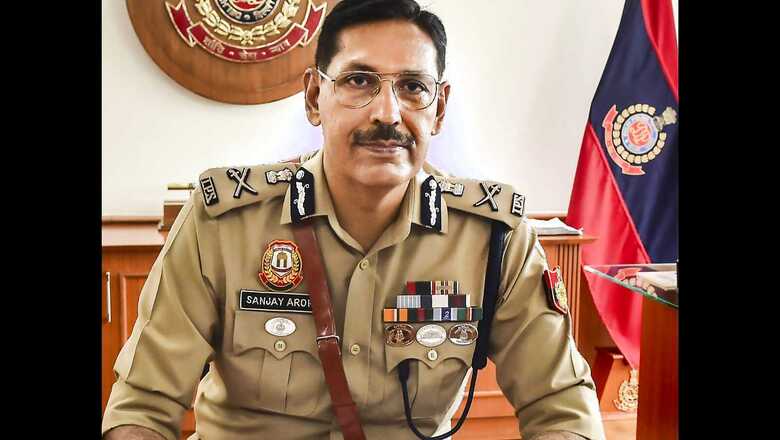
views
To streamline the functioning, Delhi Police commissioner Sanjay Arora has sought a detailed report on the integration of the Police Control Rooms (PCR) with police districts. The project was rolled out by former commissioner Rakesh Asthana who retired on July 31.
After the integration of the PCR with the districts, that started in September last year, PCR vans and emergency response vehicles of Delhi police came under the control of different police districts. Delhi is divided into 13 policing zones referred to as districts. The PCR vans were earlier controlled by the Central Police Control Room (CPCR), under the Delhi Police headquarters.
Arora, who took charge on August 1, held a meeting with the operations branch and other senior officers in the third week of August where he was apprised about the feedback on the merger. A senior police officer privy to the developments told CNN-News18 that following a detailed presentation, Arora asked for suggestions to further improve the functioning of the system.
“It was made clear that there will be no rollback, but a detailed report was sought to streamline the process and make this integration more efficient,” the officer said, requesting not to be named.
WHY THE REASSESSMENT?
CNN-News18 spoke to at least three different senior police officers, who are aware of the developments, in order to chart out the reasons why the reassessment of the project has been taken up.
LOW VISIBILITY
One of the concerns since the merger has been the decreased visibility of PCR vans on Delhi’s roads. High visibility is often believed to be a deterrence to street crime. The officers said that earlier before the integration, a PCR staff used to complete a 12-hour shift followed by 24 hours of rest time. Also, he used to report at the PCR van base, wherever the vehicle with which he/she is attached to, is stationed.
However, after the integration with the districts, shifts of the PCR staff have been cut short to eight hours, followed by eight hours of rest time. Also, the personnel now report to police stations for change of shift and as there is no dedicated staff for the PCR vans now, police personnel are deployed with PCR vans owing to their availability and depending upon their requirement for other miscellaneous tasks at the given time, the officers said.
Also, police stations earlier used a dedicated team for patrolling their jurisdiction which is now being done by the PCR staff whenever they do not have any call to attend from the command centre, where any distress call lands first.
LOW MAINTENANCE
Earlier, when the PCR vans were controlled by the CPCR, a pool of back-up vehicles was maintained in case of breakdown. The officers said that the districts do not have any pool of additional PCR vehicles. In this case, if there is a breakdown, the vehicle needs to be sent back to workshop and can only report to duty once repaired. This not only leads to a shortage of emergency response vehicles in a district, but also becomes a reason for low visibility, they said.
LOW RESPONSE TIME
Believed to be one of the major issues, the response time of these PCR vans or emergency response vehicles has increased since they are being controlled by the districts.
Officers said that every PCR staff is equipped with a Mobile Data Terminal (MDT), a handheld device, on which they press the ‘reached’ button to confirm that they have arrived at the spot they were asked to report to by the command centre.
In many incidents, the staff reports its arrival at the spot much before reaching the destination, under the pressure of maintaining the low response time. This has been confirmed by the staff at the command centre as all these vehicles are GPS enabled, the officers said.
They believe that the average response time, as registered, remains four minutes as it was before the integration, but on ground the reality of response time is different. The response time is calculated from the time a PCR vehicle logs a call from the command centre to the time it reaches the assigned spot, they said.
Read all the Latest News India and Breaking News here
















Comments
0 comment